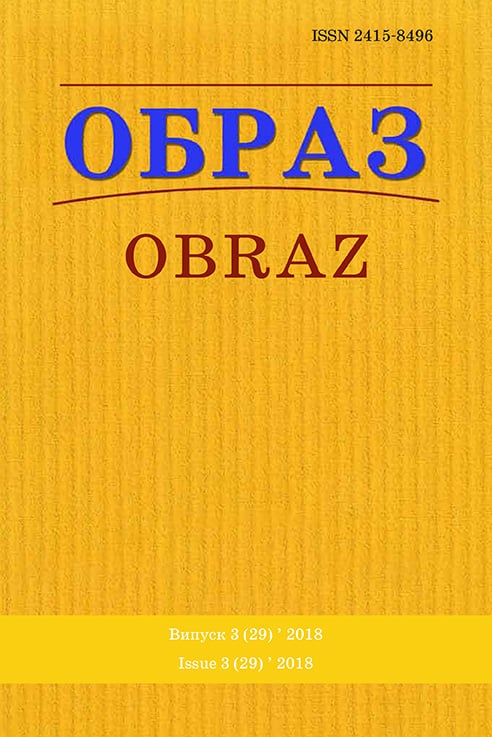Abstract
Introduction. The beginning of processes of visualization and digitalization all media as well as radio start to change. These processes take up all of the media also create a new consumer of media. Therefore, it is important to study the language consciousness through a free associative experiment, which gives us material for the study of actual concepts and needs of respondents. In our article we will focus on the study of the place of radio in the language consciousness of Ukrainians. Identify the most relevant concepts associated with it, a tool for the study of these processes is a free associative experiment. The purpose and objectives of the study: to identify relevant concepts associated with the word-stimulus RADIO in the language picture of the world of Ukrainians, to analyze the structure and semantic content of the associative field of the word-stimulus RADIO, to compare the lexical and associative meaning. Research methods: free associative experiment, semantic, quantitative analysis and comparative analysis. Results and conclusions. In the associative field of the word-stimulus RADIO identified 10 semantic areas, of which the largest – a «content» and «proper names». Conotative reactions make up 7 % of the associative field. Radio in the responses of respondents is outdated (3), old (5), forgotten, annoying, but many reactions describe the RADIO as interesting (2), funny, that carries interesting information, causes joy. The most relevant component of the lexical meaning in the associative field is the element of ‘radio transmission’. Radio for the majority of respondents is for listening to music (108 reactions), and only 32 reactions indicate the radio as a source of information. In 14 associative fields we find the reaction of the radio to other words-stimuuls of advertising vocabulary, most often repeated reaction 62 times to the word-stimulus SPEAKER and 27 times to the word-stimulus MEDIA. The reactions of the associative field showed that in the minds of respondents, radio is also associated as traditional, which is listened mainly through the radio receiver, not through the Internet. Further exploration and expansion of the circle of respondents, as well as the time of the experiment will show other relevant components of the associative meaning of the word-stimulus RADIO.
References
1. Large explanatory dictionary of the modern Ukrainian language – Mode of access : http:// www.lingvo.ua/uk
2. Denisevich, O. (2018) Associative field of words-stimulus newspaper in the language picture of the world of Ukrainians // Bulletin of the Book chamber. – № 8. – pp. 29-31.
3. Dolinsky, V. (2012) Theory of associative fields in quantative linguistics: Moscow: Thesaurus. – 512 p.
4. Maslova, V. (2001) Cultural Linguistics. – Moscow: Academy. – 208 p.
5. Miroshnichenko, P. (2013) Radio Broadcasting in the process of mediatization of the national picture of the world: Ukrainian realities // Bulletin of Lviv University. series journalism – pp. 283–288.
6. Sternin, I. (2001) Methodological problems of cognitive linguistics, Voronezh: Voronezh state University. – 182 p.
7. Ufimtseva, N. (2010) Introduction / / French associative dictionary: in 2 t. Novosibirsk: NSU. Vol.1. – pp. 3–13.
8. Кulisiewicz, T. (2007) Konwergencja w komunikacji elektronicznej i jej wpływ na operatorów media i odbiorcow // Kultura 2.0. Wyzwania cyfrowej przyszłości. – Warszawa. – S.7.
9. McQuail, D. (2008) Teoria komunikowania masowego,Warszawa.
10. Sznajderski, T. (2018) Radio w okresie nowych mediów // Radio w badaniach naukowych i praktyce akademickiej / red. M. Białek, M. Iwanowska. –Warszawa
11. Wielopolska-Szymura, M. (2012) Od audiowizualności do wizualności zjawisko konwergencji radiofonii // Konwergencja mediów masowych i jej skutki dla współczesnego dziennikarstwa. – T.1. – Uniwersytet Ślaski w Katowicach.

This work is licensed under a Creative Commons Attribution 4.0 International License.

